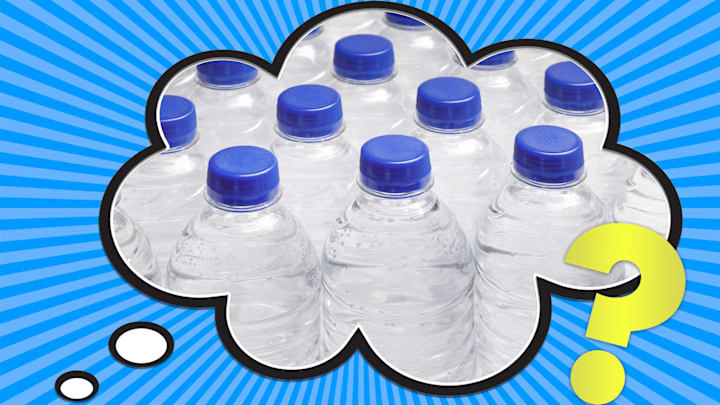Any consumer with running water can grab a glass, head to their tap, and pour 16 ounces of potable water to drink. Buy that same 16 ounces in a pre-packaged bottle of Evian or Dasani at the store and you could spend upward of $2 to $4 or even more. So why is bottled water so expensive? And what makes some brands more costly than others?
With any kind of bottled water, you’re paying for convenience and taste—or at least the illusion of the latter. Someone may prefer to have a cold bottle ready to drink than the slightly tepid water coming from a faucet. Or people may be concerned about the quality of water coming from their municipal source. In either case, water bottlers seize the opportunity to provide an alternative, which comes at a mark-up.
Why Bottled Water Is So Expensive
How much it’s marked up depends on both the bottler and the water source. According to Reader’s Digest, manufacturers with packaging and advertising expenses tend to pass those costs along to the consumer. Store-brand water probably doesn’t have much in the way of an ad budget, so it’ll likely be cheaper than cases of name-brand water taking out ads.
Cost can also—but not always—be associated with how the water is adulterated. Some brands simply package water from public sources, and consumers are more or less paying for filtered tap water with a pretty picture of a glacier on the bottle. Others take steps to purify the water or add electrolytes for taste. Some, like Fiji, charge a premium owing to the relatively “pure” private water source from, yes, Fiji. Those transportation costs are passed on to you.
Bottled water also has the added costs of federal oversight. Because it’s meant for consumption, the industry is regulated by the Food and Drug Administration (FDA). The agency mandates water quality and monitors sourcing. If a water bottler claims the water is from a well or spring, consumers can be reasonably assured those claims are true. The FDA also sets limit that take how the water is delivered into account. Tap water can have as much as 15 parts per billion (ppb) of lead owing to pipes, while bottled water is allowed a maximum of 5 ppb.
Is it really worth it? For some people, sure. Tap water is rarely dangerous, having undergone processing to kill pathogens. Still, a residential plumbing system could theoretically influence taste. So could minerals present in the water source.
There are valid reasons bottled water is expensive. Whether they’re justified or simply leave a bad taste in your mouth is entirely up to you.
[h/t Reader’s Digest]
